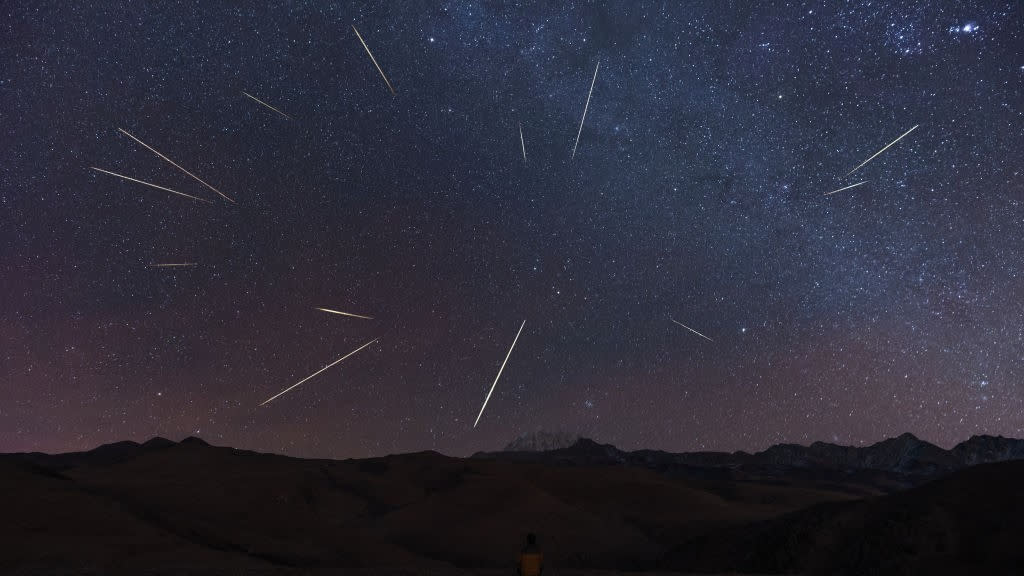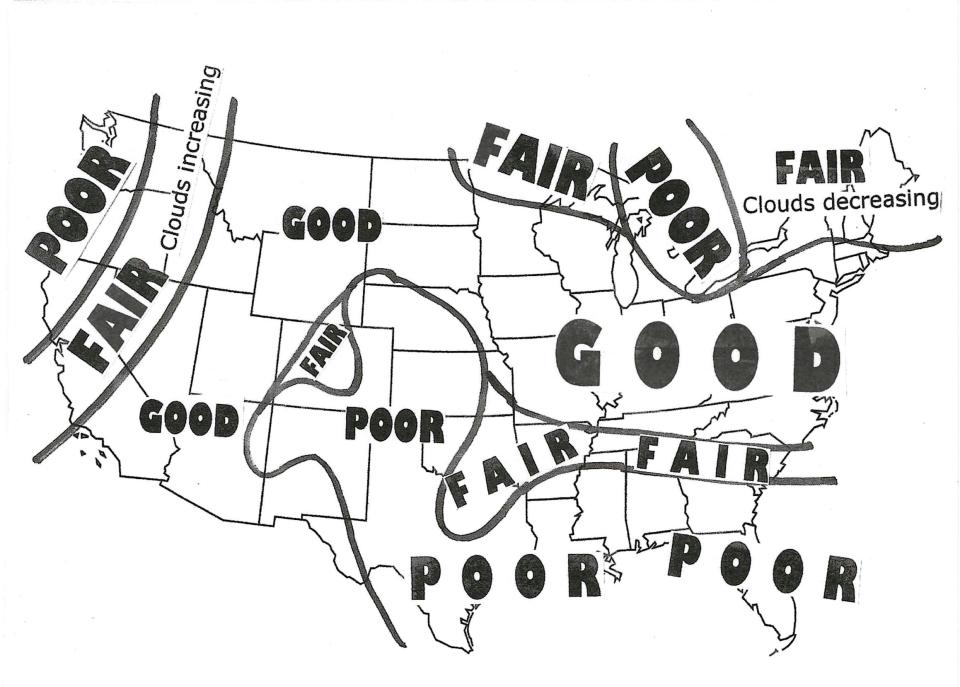The Geminid meteor shower peaks tonight. Here's what weather you can expect in the US

Things are looking up for what promises to be the best meteor shower of 2023.
For those who are hoping to get a view of the peak of the Geminid meteor shower overnight tonight, it appears that about half of the contiguous (48) states will have clear, starry skies — a perfect backdrop for watching this very best of the year's principal meteor displays.
Check out our viewing map below, where we break things down into three categories: Good, Fair and Poor.
So far as the "Good" viewing zone is concerned, a large dome of high pressure centered over the Ohio River Valley, should bring fair weather for much of the Midwest, extending east all the way to the Middle Atlantic Coast, including Pennsylvania, New Jersey, the New York Metropolitan Area and much of Southern New England. Generally clear skies should also prevail over much of the Northern Plains and south through the Rockies from Montana through much of Utah. Clear skies should also be the rule for southern California, southern and eastern Nevada and much of Arizona.
Related: Night sky, December 2023: What you can see tonight [maps]

Grim viewing prospects
TOP TELESCOPE PICK:

Look at awesome stuff in the night sky up close! We recommend the Celestron Astro Fi 102 as the top pick in our best beginner's telescope guide.
Unfortunately, there will be locations that may very well be shut out of any view of the December fireworks, due to clouds and precipitation. "Poor" viewing conditions are forecast over the Far West. A Pacific disturbance moving inland over northern California will spread a thick blanket of low clouds and spotty areas of light rain and drizzle across the western halves of Washington State and Oregon, as well as portions of northern California.
In addition, a storm system over southern New Mexico will bring widespread cloud cover to much of Texas, northern New Mexico and southern Colorado, western Oklahoma, as well as much of Kansas and Nebraska. Varying amounts of "hydro meteors" (rain) is expected to fall over these areas, with snow accumulating perhaps up to 4-inches for the high-terrain regions of New Mexico and Colorado.
West winds blowing across Lakes Huron and Ontario could produce a cloak of cloud cover over parts of Michigan, northern Ohio and northwest Pennsylvania, where snow showers could fall.
And finally, a stationary frontal zone draped across the Gulf of Mexico to south Florida is expected to bring considerable cloud cover to the Gulf Coast and the Florida Peninsula. South Florida will also deal with scattered showers as well.
Elsewhere: "So-so viewing"
Elsewhere across the rest of the nation, sky conditions are categorized as "fair." For these regions, only partly cloudy skies are expected — or the night may start cloudy, but the trend will be toward clearing conditions after midnight (or vice versa; a clear start to the night could lead to increasing clouds). Again, check our map.
Bundle up!
Those in the favored regions for viewing should be sure to bundle up, as overnight temperatures will be in the teens and 20s. One of the drawbacks of the Geminid meteor shower is that prospective viewers are usually subjected to lying on their backs for long intervals in subfreezing temperatures. Such a situation detracts from watching one of the brightest, most reliable and prolific of the year's annual meteor showers.
To obtain the latest weather forecast, tailored specifically for your hometown, check the National Weather Service website.
Here, you will find links to National Weather Service Forecast Offices across the United States, as well for Puerto Rico and American Samoa. Just locate your region and click on the weather office nearest to your location; you will be able to get the latest weather outlook. (You can also watch the Geminids virtually this evening, via a Slooh Online Observatory webcast.)
Poor in 2024 . . . better in 2025
For those who will miss this year's Geminid shower because of poor weather, we normally would say: "Wait till next year." Unfortunately, we can't even say that. In 2024, a full moon will occur on Dec. 15, just one day after the shower's peak. That means the sky will be lit up by moonlight all through the night, likely hiding all but the brightest "Gems." But it will be much better in 2025 when the Geminids coincide with a waning crescent moon.
Joe Rao serves as an instructor and guest lecturer at New York's Hayden Planetarium. He writes about astronomy for Natural History magazine, the Farmers' Almanac and other publications.
Editor's note: If you snap a great photo of the Geminid meteor shower that you'd like to share with Space.com and our news partners for a story or image gallery, send images and comments to spacephotos@space.com.

